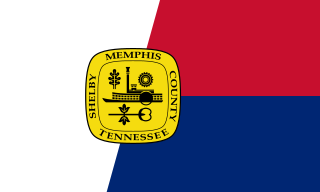 W
WThe flag of Alagoas was created by State Law of Alagoas No. 2628 on 23 September 1963. The colors refer to the French Tricolore, symbolizing the ideals of the French Revolution: liberté, égalité, fraternité.
 W
WThe flag of the British Antarctic Territory was granted on 1 August 1963, a year after the British Antarctic Territory, a British Overseas Territory, was created. Previously, the Territory was a part of the Falkland Islands Dependencies and used the same flag.
 W
WThe flag of Indianapolis was adopted on May 20, 1963. It was designed by Roger Gohl, at the time a student at the Herron School of Art. The white star represents the Soldiers' and Sailors' Monument, and its centralization the fact that Indianapolis is the state capital of Indiana. The white circle and the red field within it depict Monument Circle. The color red also signifies "the driving energy and urge for progress that has made the City of Indianapolis race ahead." The four white stripes represent North and South Meridian Streets vertically, and East and West Market Streets horizontally, along with the city's unofficial motto, the Crossroads of America. The four quadrants of dark blue symbolize the residential areas of the city. The colors of the flag are the same as the flag of the United States.
 W
WThe flag of Iraq includes the three equal horizontal red, white, and black stripes of the Arab Liberation flag, with takbīr in Kufic script written in the center.
 W
WThe flag of Kenya is a tricolour of black, red, and green with two white edges imposed with a red, white and black Maasai shield and two crossed spears. The flag is based on that of Kenya African National Union and was officially adopted on 12 December 1963 after Kenya's independence.
 W
WThe flag of Memphis, Tennessee was designed by Albert Mallory III, then a student at the Memphis Academy of Arts, and was formally adopted by the city commission in July 1963. The flag was updated in 1967 to its current form, when a new city seal design by Alfred Lewis Aydelott was adopted by the city government, as it transitioned to a mayor-council form of government.
 W
WThe flag of Nashville, Tennessee, consists of the city's seal on a white disc surrounded by a field of blue, with a strip of gold on the fly. According to the resolution adopting the flag, the blue stands for the courage and conviction of the city's leaders throughout history, while the gold denotes the richness of city's land and resources. The flag was adopted in December 1963 when the governments of Nashville and Davidson County merged to form the Metro government. In an official ceremony, it was reigned in as the new flag on August 4, 1964, at the Metropolitan Courthouse. The flag is modeled after the Tennessee state flag.
 W
WThe current flag of Prince George's County, Maryland, was adopted in 1963, replacing one that had been in use since 1696. It is a 3 parts tall by 5 parts wide white field with a red St. George's cross atop it, with the seal of Prince George's County in the canton. Though official regulation states that the flag use the former county seal that was used from 1958 to 1971, in practice most flags that are manufactured and used by the county government itself use the current county seal, which was introduced in 1971.